 |
…how long that employee stays and how productive he is while he is there is determined by his relationship with his immediate supervisor.
|
8 |
 |
When you use ‘orthodox planning’ to create a vision, frustration and failure are inevitable.
|
68 |
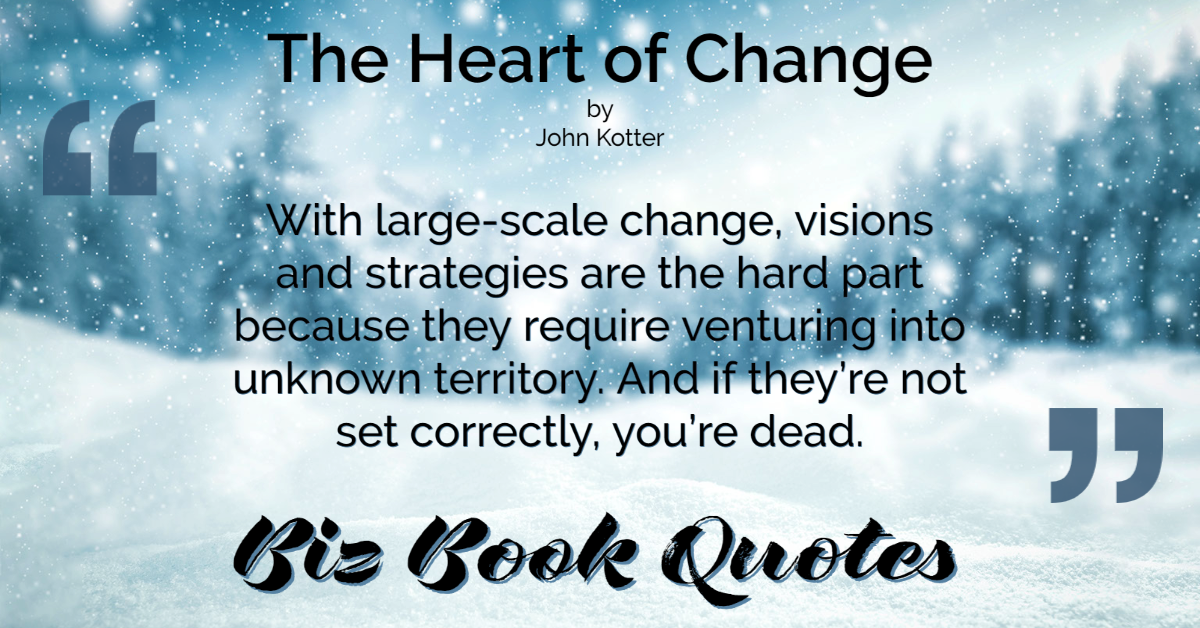 |
With large-scale change, visions and strategies are the hard part because they require venturing into unknown territory. And if they’re not set correctly, you’re dead.
|
68 |
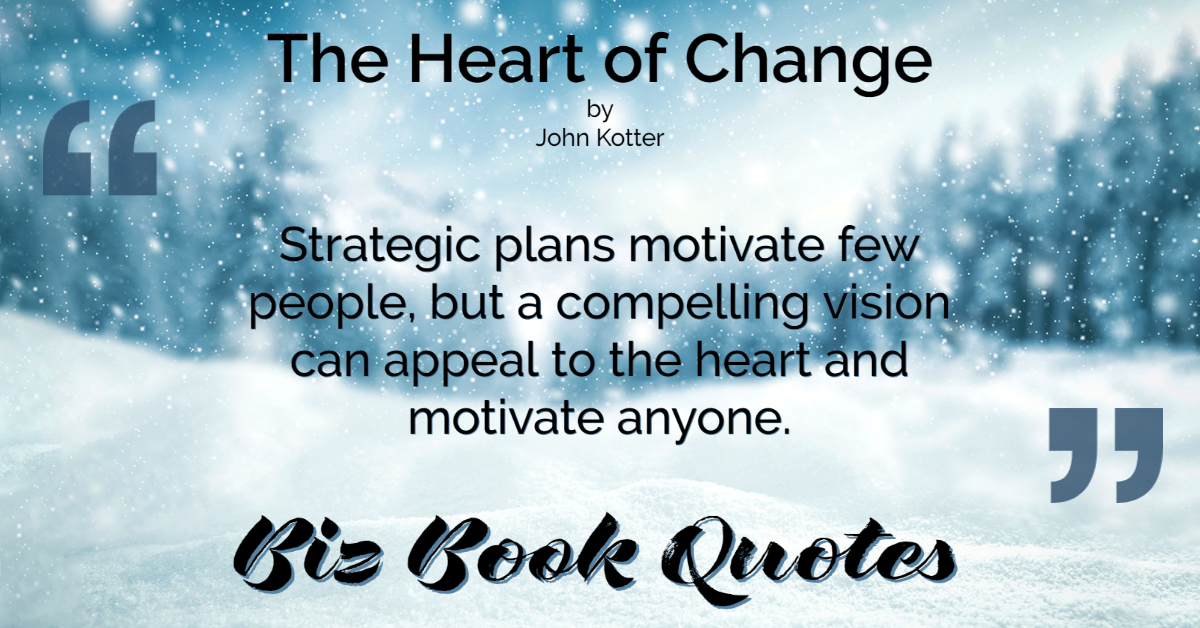 |
Strategic plans motivate few people, but a compelling vision can appeal to the heart and motivate anyone.
|
69 |
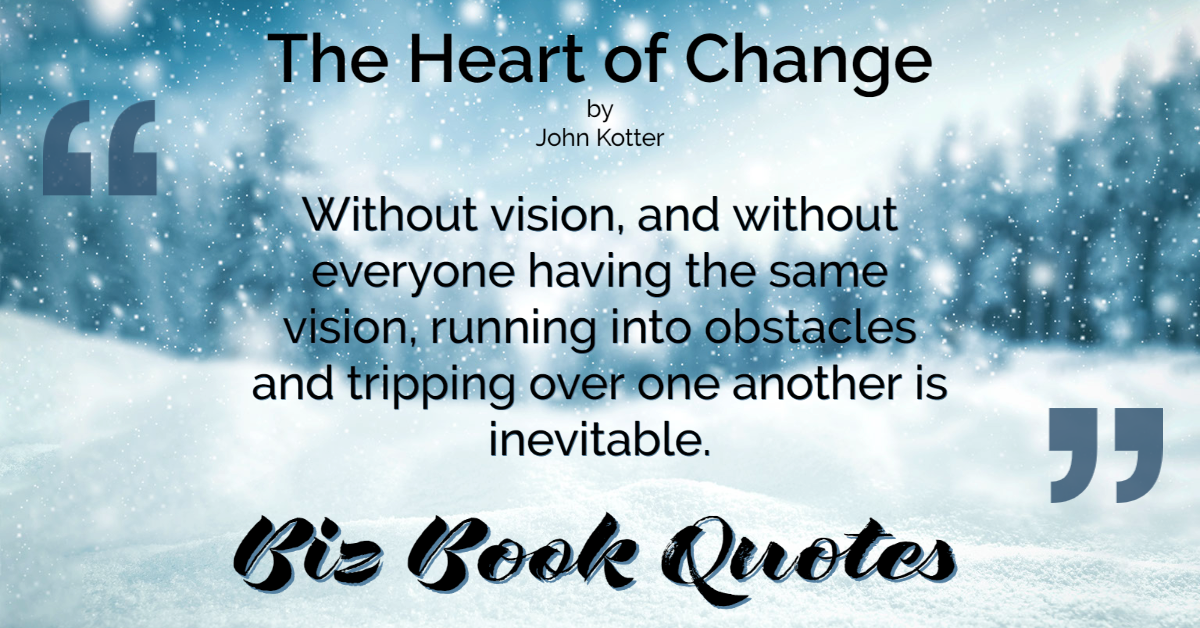 |
Without vision, and without everyone having the same vision, running into obstacles and tripping over one another is inevitable.
|
69 |
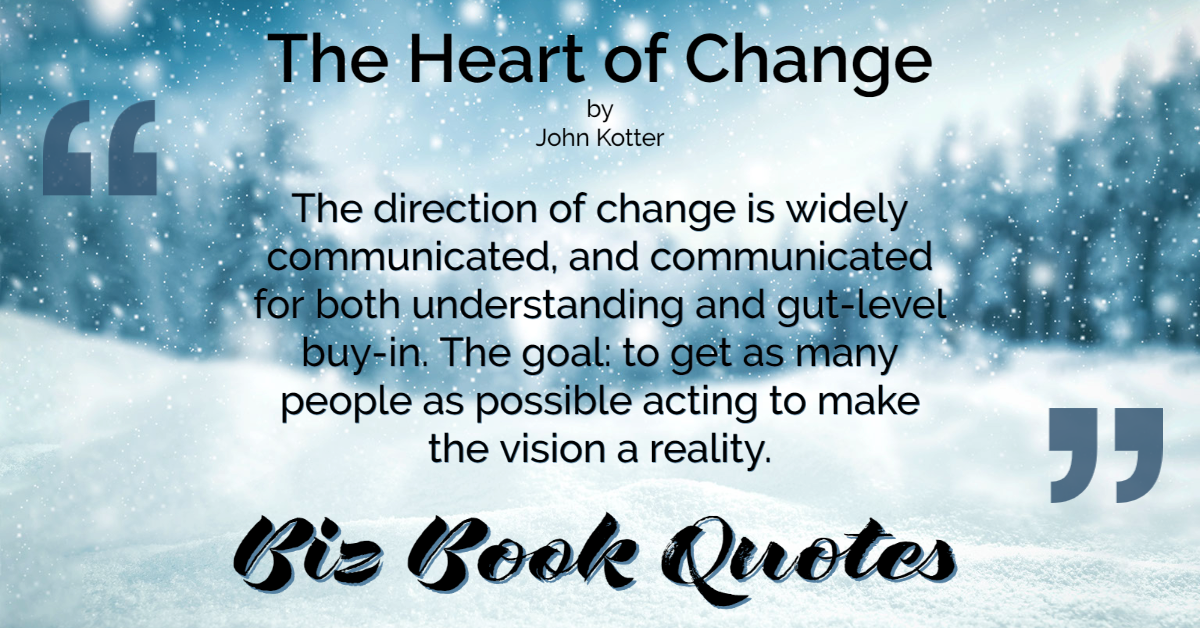 |
The direction of change is widely communicated, and communicated for both understanding and gut-level buy-in. The goal: to get as many people as possible acting to make the vision a reality.
|
83 |
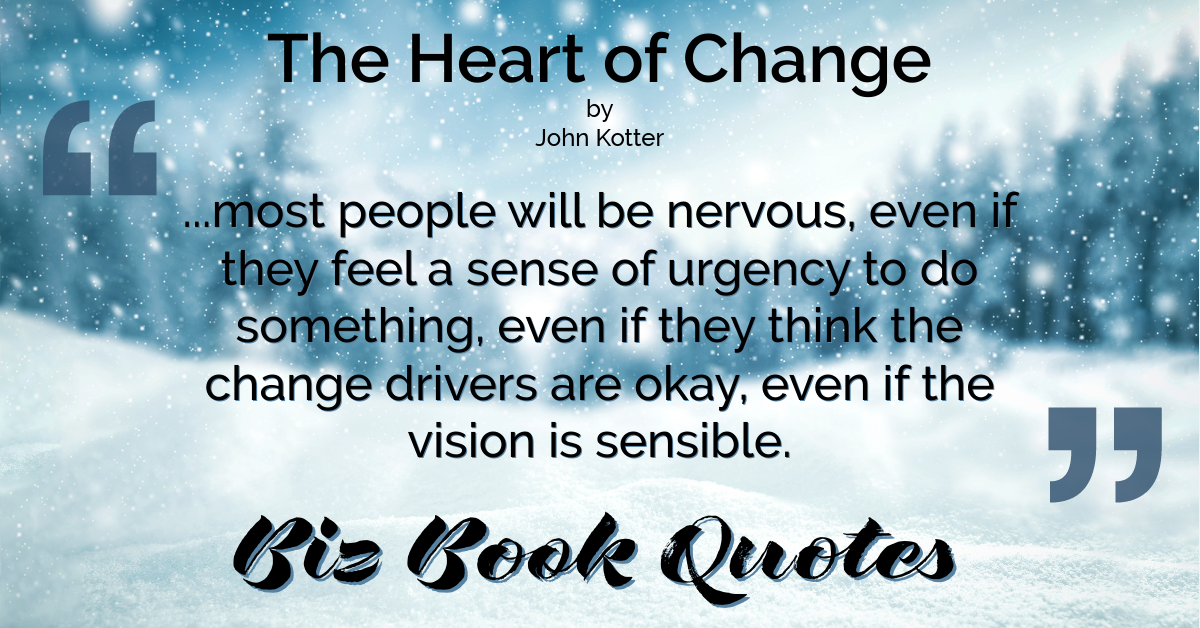 |
…most people will be nervous, even if they feel a sense of urgency to do something, even if they think the change drivers are okay, even if the vision is sensible.
|
86 |
 |
With clogged channels, even if someone is emotionally predisposed to want to understand a change vision, the information can become lost in the immense clutter.
|
89 |
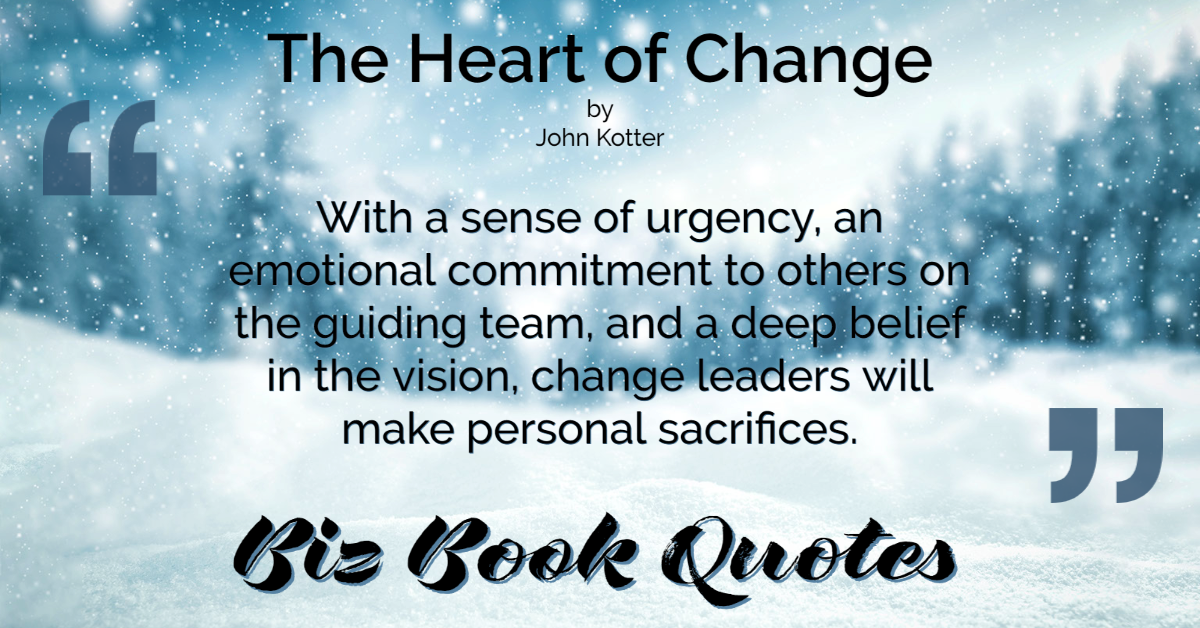 |
With a sense of urgency, an emotional commitment to others on the guiding team, and a deep belief in the vision, change leaders will make personal sacrifices.
|
94 |
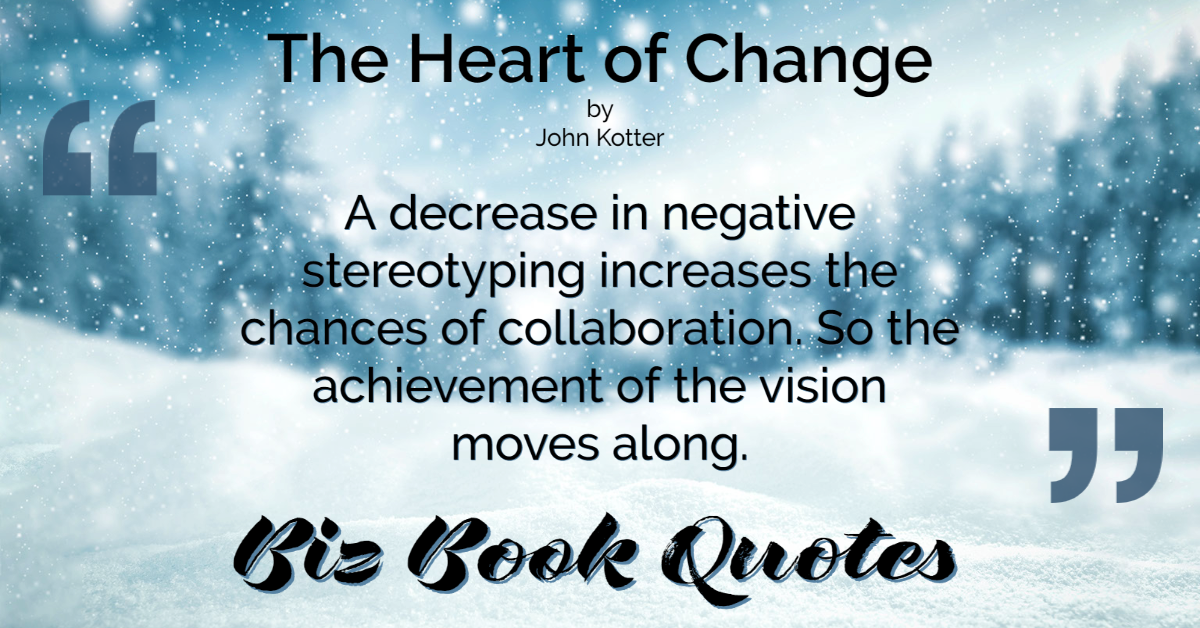 |
A decrease in negative stereotyping increases the chances of collaboration. So the achievement of the vision moves along.
|
158 |